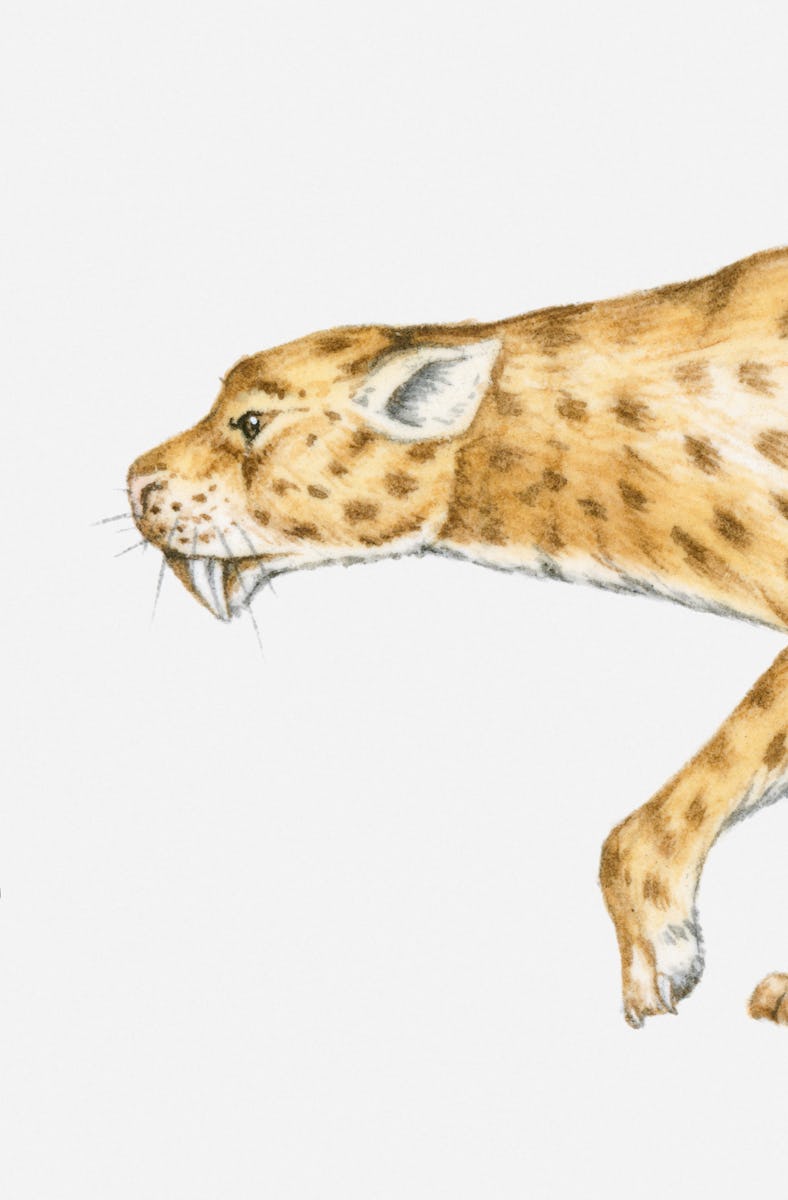Two Newly-Discovered Saber-Toothed Cat Species Shed Light on the Ancient Past
Paleontologists found the fossils of four extinct saber-toothed cat species, including those of two newly-discovered species.

Paleontologists discovered two new species of saber-toothed cats that roamed South Africa more than 5 million years ago.
Skull and teeth remains from two unknown species of ancient predators, plus fossils from two already-discovered saber-toothed cat species, appeared in a dig site eight miles from the Atlantic coast of South Africa, called Langebaanweg ‘E’ Quarry. The paper that announced the fossils on Thursday in the journal iScience calls Langebaanweg ‘E’ Quarry “one of the most important fossil communities” for understanding what happened during a major transition in our planet’s history, when the lush wet forests were disappearing, and in their wake, came grasslands, wooded forests, and a cooler world.
The great cats of today are fitted with adaptations to the places they live. The variety of fossils in Langebaanweg suggests “the presence of a mosaic environment” right as the world was in transition, the paper authors wrote.
The upper-canine teeth from the newly-discovered sabertoothed-cat species, and one set from another known species. (A) comes from Dinofelis werdelini, and (B) is from Lokotunjailurus chinsamyae. (C) is from Adeilosmilus aff. kabir.
A changing planet
Five million years ago, Earth’s Miocene epoch was coming to an end. The planet was cooling down and the lush wetlands that covered most of the planet were being replaced by woodlands and savannas. The merging of continental crusts, and the rapid ascension of some mountain ranges like the Himalayas, contributed to making Earth much cooler and fostered these new environments.
As terrain divided up into different ecosystems, animals went extinct or evolved adaptations. “The taxonomy, evolution, and diversity of this fauna is therefore very important for a precise reconstruction of the paleoenvironment,” the authors wrote in the paper.
The saber-toothed cats
In animal classification, all cats belong to a family of carnivorous mammals called Felidae. Those alive today, from lions to domestic cats, are further categorized in the subfamily Felinae. The ancient predators that have gone extinct, including all four described in the paper, are in the subfamily Machairodontinae.
The fossils in the new study belong to known-species Yoshi obscura and Adeilosmilus aff. kabir, plus the “species nova” — or newly-discovered species — Lokotunjailurus chinsamyae (members of which had never been discovered in the region) and Dinofelis werdelini.
Unlike today’s cats, which have conical canine teeth, the Machairodontinae cats had what the Florida Museum describes as “flatter, more knife-like” teeth. This is why Machairodontinae are commonly called saber-toothed cats.
According to LiveScience, which also covered the recent findings in an article published on Thursday, the four species from the Langebaanweg Quarry were not closely related to one another. Although they lived at the same time around the same area, they “likely occupied very different ecological niches.” According to the article, L. chinsamyae and A. kabir were large and more adapted to speed, a hint that they lived in open grassland environments. The other two species were smaller and agile, and would have probably thrived in forests.
Plant-eating animals living at that time also left behind fossils in Langebaanweg. According to the paper, these herbivorous fossils suggest the saber-toothed cats lived in “a Mediterranean climate.”
Machairodontinae first appeared about 12 million years ago, and went extinct less than 10,000 years ago. They lived across several continents, including North America and Europe in addition to Africa. Their presence on Earth overlapped with humans.
This article was originally published on